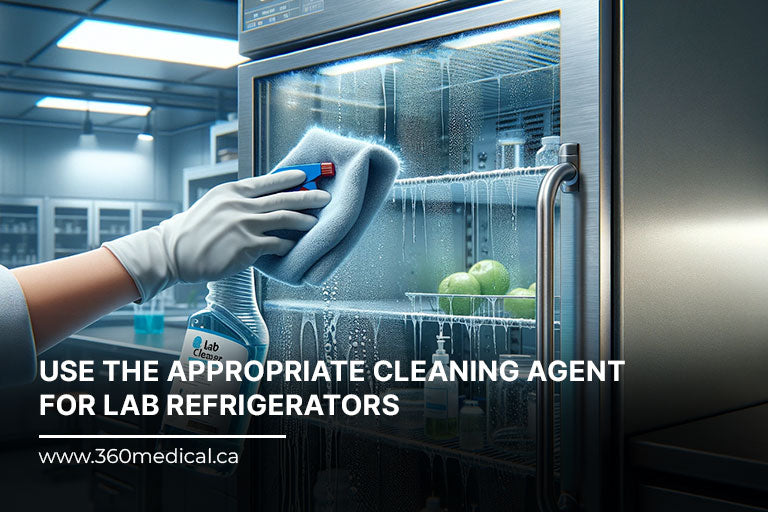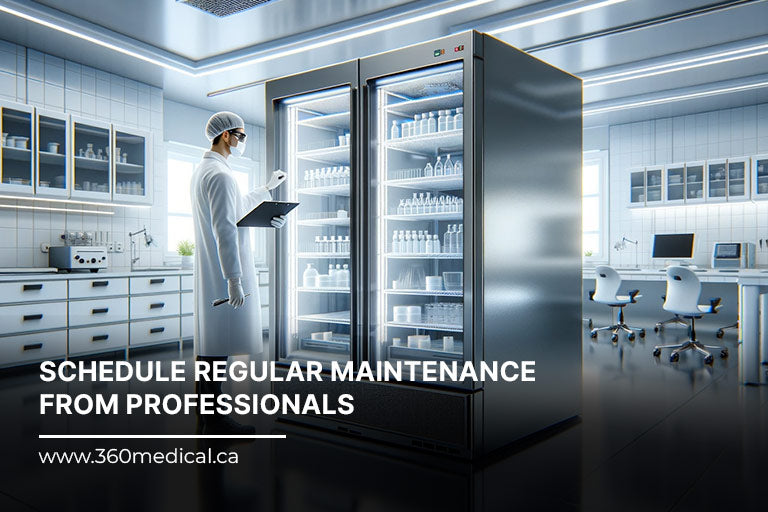Mastering Lab Refrigerator Hygiene: 10 Essential Cleaning Tips

In the field of scientific research and healthcare, the integrity of laboratory refrigerators is paramount. These specialized appliances perform functions far beyond the scope of ordinary kitchen units. They play a crucial role in preserving the quality and safety of sensitive materials ranging from biological samples to critical vaccines. Keeping them clean is not only a matter of organization; it's a vital aspect of laboratory management that directly impacts the accuracy of research outcomes and the effectiveness of medical treatments.
Understanding the lab fridge maintenance and cleanliness these sophisticated units is essential for any medical setting. Whether you're a seasoned lab manager or a new technician, these ten essential tips will help you navigate the challenges of keeping your laboratory refrigerator in pristine condition.
Why Regularly Clean Your Laboratory Refrigerator
- Preventing Contamination
A laboratory refrigerator is used to store various samples, chemicals, and biological materials, many of which are sensitive and can easily become contaminated. Regular cleaning helps remove potential sources of contamination, such as spilled liquids, expired or deteriorating samples, and any microbial growth. Sanitizing of medical fridges can lower the risk of cross-contamination between different experiments or samples, ensuring the accuracy and reliability of your research results.
- Ensuring Sample Integrity
Proper storage conditions are vital for preserving the integrity of samples and reagents. Laboratory refrigerators are designed to maintain specific temperature and humidity levels, which are critical for the stability of many compounds and biological materials. Failure to clean the refrigerator can lead to temperature fluctuations, condensation, or the buildup of ice, all of which can compromise the quality and viability of your stored samples.
- Enhancing Safety
Laboratory refrigerators often store hazardous materials, including chemicals and biological agents. Neglecting to clean the refrigerator can result in the accumulation of spills and residues that may pose safety risks to laboratory personnel. These residues can react with other stored materials, release harmful fumes, or lead to accidents. Keeping your refrigerator clean reduces the likelihood of accidents and exposure to potentially dangerous substances.
Tips When Cleaning Your Refrigerator
- Schedule Regular Cleanings
Maintaining a laboratory refrigerator requires a consistent cleaning schedule. Unlike domestic fridges, lab refrigerators, often used to store sensitive samples, demand more frequent and thorough cleaning. A bi-weekly or monthly cleaning routine, depending on the usage intensity, is ideal. This routine not only keeps your fridge hygienic but also ensures you regularly check and manage inventory. Expired or contaminated samples can be hazardous, and regular cleaning helps in identifying and disposing of them safely.
- Use Appropriate Cleaning Agents

Selecting the right cleaning agents is crucial for laboratory refrigerators. Harsh chemicals can damage the interior surfaces or potentially contaminate stored samples. Opt for mild detergents or isopropyl alcohol for efficient and safe cleaning. Dilute these cleaning agents as per the manufacturer's instructions to avoid any corrosive effects. It's vital to ensure that these agents do not react with materials stored in the fridge, so always cross-check their compatibility.
- Organize Contents Before Cleaning
Before starting cleaning the medical refrigerator, organize and categorize the contents of your laboratory refrigerator. This step is critical to avoid cross-contamination and to ensure that all items are returned to their appropriate place. Sort out the items that need to be kept at a constant temperature and temporarily store them in another fridge or a cool box.
- Defrost and Clean the Freezer Compartment
If your laboratory refrigerator includes a freezer compartment, it's essential to defrost and clean it regularly. Ice buildup can interfere with the temperature regulation and potentially damage the unit. Turn off the fridge and allow the ice to melt, then remove all water and ice debris. After defrosting, clean the compartment thoroughly with a suitable cleaning agent, ensuring no residue is left behind.
- Wipe Down Shelves and Compartments
Remove all shelves, racks, and compartments from the laboratory refrigerator and clean them separately. This approach ensures that every nook and cranny is accessed and cleaned effectively. Use a soft cloth or sponge along with a mild detergent to wipe down each part. Pay special attention to corners and joints where dirt and contaminants are likely to accumulate. Rinse thoroughly with water and dry completely before reassembling.
- Clean the Exterior and Seals
The exterior of a laboratory refrigerator, including its door seals, should not be overlooked. Dirt and grime on the seals can affect the fridge's temperature maintenance. Wipe down the exterior with a damp cloth and a gentle cleaner. For the seals, use a soft brush or cloth to remove any debris and ensure a tight seal. Regular cleaning of the exterior also maintains the fridge's appearance and functionality.
- Avoid Overcrowding
Overloading can obstruct air circulation, leading to uneven temperature distribution. Ensure there's enough space between items for air to flow freely. This not only aids in maintaining a consistent temperature but also makes future cleanings easier and more effective, as items are more accessible and less cramped.
- Monitor and Record Temperatures
Consistent temperature monitoring is a key aspect of laboratory refrigerator maintenance. After cleaning, check and record the temperatures to ensure they are within the required range for your stored materials. Temperature fluctuations can be a sign of potential problems, and regular monitoring helps in early detection and rectification. This practice is not only about cleanliness but also about maintaining optimal storage conditions.
- Handle Spills Immediately
In a laboratory setting, spills can be a common occurrence and pose a risk of contamination. Address spills in your laboratory refrigerator immediately. Wear appropriate protective gear, clean up the spill using a suitable disinfectant, and ensure the area is thoroughly dried. Immediate action prevents the spread of contaminants and maintains the hygiene of the fridge.
- Professional Maintenance

In addition to regular cleaning of laboratory refrigerators, schedule periodic professional maintenance for your laboratory refrigerator. Professionals can conduct in-depth checks and repair, including areas that are difficult to access. They can also identify and rectify potential technical issues, extending the lifespan of your fridge.
A well-maintained refrigerator not only safeguards the quality and reliability of your specimens but also contributes to the overall safety and efficiency of your lab operations. These best practices for refrigerator hygiene are fundamental to maintaining the integrity of your samples and preventing cross-contamination, ensuring that your laboratory remains uncompromised. By implementing these cleaning tips as part of your lab's routine, you are not only adhering to best practices but also demonstrating a commitment to the highest standards of scientific rigor and safety.
For top-quality laboratory refrigerators, visit 360 Degree Medical or call 1-800-209-2082 for expert advice and solutions tailored to your lab's needs. Don't compromise on the quality of your research or the safety of your team!





Leave a comment